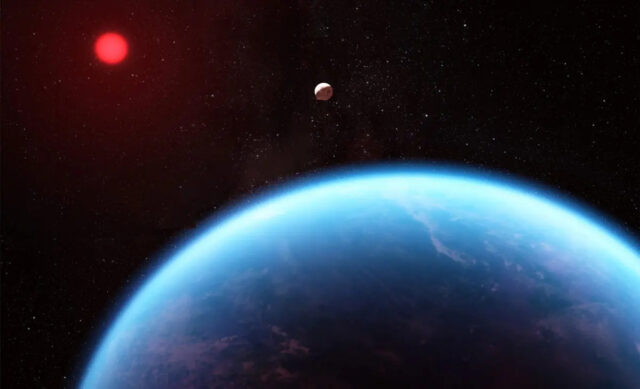
In a groundbreaking discovery that could reshape humanity’s understanding of life beyond Earth, scientists have detected potential signs of biological activity on the distant exoplanet K2-18b, located 124 light-years away in the constellation Leo. Using the powerful instruments aboard the James Webb Space Telescope (JWST), researchers identified dimethyl sulphide (DMS) and dimethyl disulphide (DMDS)—two molecules that, on Earth, are exclusively produced by living organisms.
A Glimpse Into Another World
K2-18b, a so-called “hycean world”, is classified as a type of planet believed to have a vast liquid water ocean beneath a hydrogen-rich atmosphere. With a mass approximately 8.6 times that of Earth, it exists within the habitable zone of its star—where conditions could allow for the presence of liquid water, a key ingredient for life as we know it.
What sets this detection apart is the concentration of these molecules, measured at over 10 parts per million, far surpassing natural background levels found on Earth. On our planet, DMS is largely emitted by phytoplankton in the oceans, while DMDS can be found in microbial and fungal activity. The high levels found on K2-18b suggest that something beyond simple chemistry may be at play.
The Science Behind the Signal
The presence of DMS and DMDS was confirmed with a statistical confidence of 99.7%, also known as three-sigma in scientific terms. While this level is highly suggestive, it does not meet the more rigorous five-sigma threshold typically required for scientific confirmation. In simple terms, the results are promising but not yet definitive—further investigation is required.
The findings underscore JWST’s unprecedented capability to detect biosignatures—chemical fingerprints that could indicate life—on planets light-years away. “This is one of the most compelling signs we’ve seen,” said a lead astronomer from the research team. “But we must be cautious. Nature can be deceptive, and we must rule out all non-biological explanations.”
What’s Next?
Given the significance of the discovery, scientists plan further observational campaigns over the next 1–2 years. These efforts aim to replicate the findings, monitor the atmospheric chemistry of K2-18b in more detail, and search for additional biosignatures. If future data continues to support the presence of life-related molecules, it could mark a monumental shift in our search for life in the universe.
A Cosmic Turning Point?
For decades, humanity has gazed into the stars with the question: Are we alone? This discovery on K2-18b may not be a definitive answer, but it is among the strongest hints yet that life might not be unique to Earth.
As scientists continue to scan the skies and probe distant atmospheres, the dream of discovering extraterrestrial life feels closer than ever before. The next few years could be critical—not just for space science, but for our understanding of life itself. 🌌🔭
Sources: BBC, Reuters, NYTimes, NewScientist.



